Description
Students will gain an understanding of the size of different cetaceans. They will a) use a "whale-o-meter" to compare the length of different cetaceans, b) calculate the weight of a young killer whale as it goes through various stages of growth, and c) make a life-size outline of one or more cetacean species.
Objectives
By the conclusion of the activities, students will:
- Be able to research and compare the lengths of different cetaceans
- Be able to display the lengths of different cetaceans using a "whale-o-meter"
- Be able to use multiplication to estimate the weight of killer whales (orcas) at different ages
- Be able to use math to create life-size drawings of different cetaceans
What You Will Need
For the Whale Length Activity
- Access to a long hallway, sidewalk, or playing field (at least 100 feet)
- Whale-o-meter rope (100 feet, marked in 10-foot increments with flagging tape or colored cable ties; have each mark labeled with the length measurement.)
- Whale-o-meter data sheets (page 4-7; one per student or group of students)
- Cetacean fact sheets (from Lesson 3) or other cetacean reference materials (from the Internet or library)
- Optional: Globe or world map showing the names of the oceans
For the Killer Whale Growth Activity
- How Fast Does a Killer Whale Grow? worksheet (page 4-8; one per student)
For the Life-Size Whale Drawing Activity
- Small-scale rectangles (page 4-12; one per student)
- Large-scale rectangles (page 4-13; one per student)
- Cetacean Sketches for Scale Drawing sheets (pages 4-10 and 4-11; one per group of students)
- Graph paper (quarter-inch squares, one piece per student; one-inch squares, approximately two sheets per student)
- Butcher paper roll or large paved area
- Chalk line reel (available at hardware stores for around $10)
- Sidewalk chalk (if the drawing will be outdoors on pavement)
- Markers (if the drawing will be on butcher paper)
Standards
Florida Sunshine State Standards
Mathematics
- MA.4.AR.1.1 Solve real-world problems involving multiplication and division of whole numbers including problems in which remainders must be interpreted within the context.
- MA.4.AR.2.2 Given a mathematical or real-world context, write an equation involving multiplication or division to determine the unknown whole number with the unknown in any position.
Common Core Standards
ELA/Literacy
- RI.4.1 Refer to details and examples in a text when explaining what the text says explicitly and when drawing inferences from the text.
- W.4.2 Write informative/explanatory texts to examine a topic and convey ideas and information clearly.
- W.4.7 Conduct short research projects that build knowledge through investigation of different aspects of a topic.
- SL.4.4 Report on a topic or text, tell a story, or recount an experience in an organized manner, using appropriate facts and relevant, descriptive details to support main ideas or themes; speak clearly at an understandable pace.
Mathematics
- 4.MD.A.1 Know relative sizes of measurement units within one system of units including km, m, cm; kg, g; lb, oz.; L, mL; hr, min, sec. Within a single system of measurement, express measurements in a larger unit in terms of a smaller unit.
- 4.OA.A.2 Multiply or divide to solve word problems involving multiplicative comparison, e.g., by using drawings and equations with a symbol for the unknown number to represent the problem, distinguishing multiplicative comparison from additive comparison.
- 4.NBT.B.4 Fluently add and subtract multi-digit whole numbers using the standard algorithm.
- 4.NBT.B.5 Multiply a whole number of up to four digits by a one-digit whole number, and multiply two two-digit numbers, using strategies based on place value and the properties of operations. Illustrate and explain the calculation by using equations, rectangular arrays, and/or area models.
Whale Length Activity
Strategy
- If possible, before class starts, set up the whale-o-meter rope by extending it along the edge of a hallway or sidewalk, or across a playing field.
- Explain to the students that they are going to create a "whale-o-meter" (rhymes with thermometer). Write this word on the board.
- Ask students what the word "meter" is used for. Give them hints—what do we use each of these items for? Use the illustration page (page 4-13) to show students these different types of meters and explain what they are used for.
- Thermometer (measuring temperature)
- Speedometer (measuring speed of a moving car)
- Pedometer (measuring the number of steps someone takes)
- Odometer (in a car) (measuring how far the car has been driven)
- Barometer (used by weather forecasters) (measuring atmospheric pressure)
- Seismometer (measuring how strong an earthquake is)
4. Ask the students: what did all the words have in common? (the word "meter"; they were all ways of measuring something)
5. Ask the students what they think a whale-o-meter would be used for (measuring whales).
6. Explain that the students will research different types of cetaceans and use the whale-o-meter to show the rest of the class how different cetaceans compare in length.
7. If you have more than 16 students, pair them up so you have no more than 16 pairs.
8. Give each student or pair of students a copy of the whale-o-meter data sheet and a copy of a cetacean fact sheet. Each student or pair of students will get a different whale or dolphin fact sheet.
9. Have the students use the fact sheets to complete the information on the whale-o-meter data sheet. It may be helpful to have a globe or map showing the names of the oceans to help students answer the question about where their cetacean lives.
10. Once students have completed the data sheets, have them take turns sharing the information on their sheet with the rest of the class.
11. Once everyone has shared their information with the class, take the class to the area where the rope has been set up. Explain that the rope is the whale-o-meter, and it is marked in 10-foot increments.
12. Have each student or pair locate the point on the rope that represents the maximum length for their cetacean and place their data sheet at that point. They will have to estimate the distances by using the 10-foot increments as a guide. You can have them use rulers if you want them to get exact measurements.
13. Have one student (or teaching assistant) stand at the "zero" point of the line. Walk to the first whale-o-meter data sheet. If all 16 fact sheets were used, the first data sheet should describe the spinner dolphin, at 7 feet. Pick up the data sheet. Explain to students that the distance between you and the person at the "zero" is the length of a spinner dolphin (7 feet). Replace the data sheet. Move to the next closest fact sheet. Repeat for all of the fact sheets (you should end up with the blue whale, which can get to 108 feet).
Killer Whale Growth Activity
Strategy
- In the classroom, have students complete the How Fast Does a Killer Whale Grow? worksheet.
Life-Size Whale Drawing Activity
Students will first use a key or some other small object to practice transferring a shape from a small-scale grid to a larger-scale grid. Once they understand the technique, they will use it to create a life-size drawing of a cetacean species, either on butcher paper or on pavement using sidewalk chalk. If using butcher paper, this activity is best done in a multipurpose room or gymnasium with hard floors and lots of room to spread out! If done outside, a basketball court or empty parking lot is ideal.
Strategy
- Provide each student with one copy of each of the two rectangular grids (small-scale: page 4-11, and large-scale: page 4-12).
- Have students trace around a fairly small object (preferably something with an irregular shape, like a key or a seashell. If you have access to stencils, those might be good for this activity) on the small-scale graph paper. The traced object should fit within the grid given.
- Ask students if they have ever played Battleship, where spots on a grid are identified by row and column. Explain to the students that they are going to make an enlarged version of their drawing by using the letters and numbers on the rows and columns to match up each square from the small-scale rectangle to the corresponding square on the large-scale rectangle.
- Have the students transfer their drawing from the small squares to the large squares. It is easiest to do this one square at a time. The numbers and letters will help the students keep track of the squares.
- Explain to the students that they will be using this same method to create life-size drawings of whales. Divide the class into groups of five to ten. Assign each group one of the cetaceans for which there is a scale drawing (pages 4-9 to 4-10).
- Distribute one or two sheets of 1-inch graph paper to each group. Explain that the students will copy the drawing of their whale from the scale drawing onto the 1" graph paper. They can trace the drawing if they would prefer. If possible, make two or three copies of the finished drawing for the students to work from in the next step.
- If using butcher paper, unroll the butcher paper*. Use a 100-foot tape measure to cut the butcher paper into appropriate lengths for the whale drawings. The larger whales will need several pieces of butcher paper, as they are 20 to 30 feet high (the number of pieces will be determined by the width of the butcher paper). Help the students tape their butcher paper sheets together (masking tape is good for this as students will be able to draw over the masking tape with pencil).
- Have pairs of students stretch out tape measures along all four sides of each sheet of paper. Have another student hold the end of a carpenter's chalk line at one of the 10-foot marks. Stretch the line to the opposite 10-foot mark. Have another student put their finger on the chalk line at that opposite side of the paper. Lift up the line slightly and allow it to snap down on the paper. Pick up the line and move it to the next 10-foot increment (try not to drag it on the paper). Repeat. You may be able to get three to four lines marked before you have to wind the chalk line back into the spool and then start again. If working outdoors, have students create these lines in a designated paved area; you may want to make the perimeter lines ahead of time.
- Once the lines are marked, each group of students should use pencil (on paper) or chalk (outdoors) to letter and number the rows and columns on their grid to match the squares on their scale drawing.
- The students should work together to transfer the drawing to the butcher paper or pavement. Each student should copy an equal number of squares. Once the outline is finished, the students can use paint or thick markers to trace the complete outline on the butcher paper.
- If desired, you could have the students estimate the area of their whale's outline. Each square is 100 square feet.
*Amount of butcher paper or paved space needed will be as follows:
Bottlenose dolphin: 3 feet x 10 feet
Beluga: 6 feet x 16 feet
Cuvier's beaked whale: 6 feet x 23 feet
Orca: 16 feet x 30 feet
Humpback: 18 feet x 50 feet
Right whale: 20 feet x 55 feet
Fin whale: 18 feet x 80 feet
Blue whale: 26 feet x 82 feet
WHALE-O-METER Data Sheet
My whale is called a:
My whale is a (circle one): baleen whaletoothed whale
My whale can grow up to ________ feet long.
My whale lives in the (circle all that apply): Pacific Ocean Atlantic Ocean Arctic OceanIndian Ocean
Some interesting things that I learned about my whale (suggestions: How deep can it dive? How long can it hold its breath? Does it have unusual color patterns or markings? What does it eat? Does it have any other names?):
Use the back side of this sheet to draw a picture of your whale.
How fast does a killer whale grow?
A baby killer whale weighs about 350 pounds at birth. For the first two years of its life, it grows at a rate of about 60 pounds every month. Between the ages of two and three, a killer whale averages about 80 pounds of weight gain per month. Between years three and five, the growth slows with an average weight gain of about 30 pounds a month.
- Based on the information given above, calculate how much a killer whale should weigh at each age. Show your calculations in the "Weight" boxes and circle your answer.
A 2012 Volkswagen beetle car weighs 2,939 pounds. Circle the one that weighs more: the four-year-old killer whale or the Volkswagen beetle.
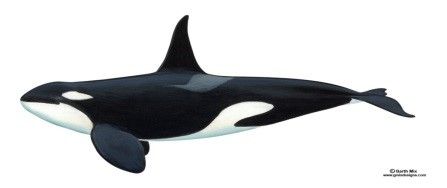
Credit: Garth Mix (provided by NOAA Fisheries)
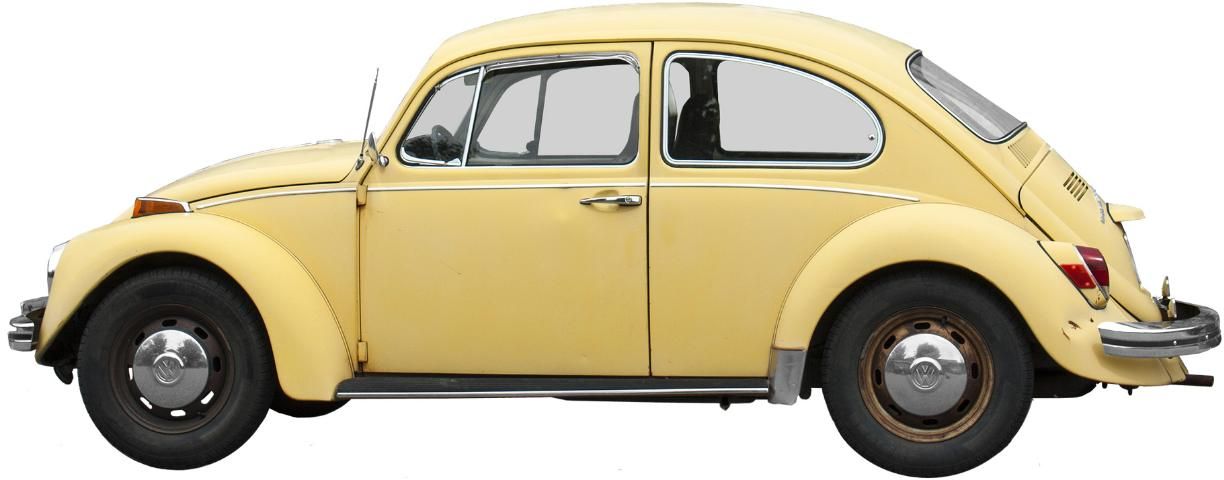
Credit: Emslichter from Pixabay
Answer Key
A baby killer whale weighs about 350 pounds at birth. For the first two years of its life, it grows at a rate of about 60 pounds every month. Between the ages of two and three, a killer whale averages about 80 pounds of weight gain per month. Between years three and five, the growth slows with an average weight gain of about 30 pounds a month.
- Based on the information given above, calculate how much a killer whale should weigh at each age. Show your calculations in the "Weight" boxes and circle your answer.

2. A 2012 Volkswagen beetle car weighs 2,939 pounds. Circle the one that weighs more: the four-year-old killer whale or the Volkswagen beetle.
The killer whale weighs more.
Cetacean Sketches for Scale Drawing
Beluga (16 feet)
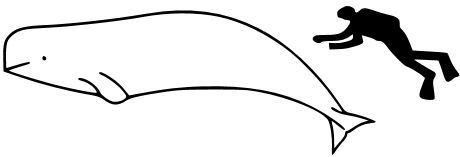
Blue whale in the Atlantic Ocean (88 feet)

Humpback whale (48 feet)
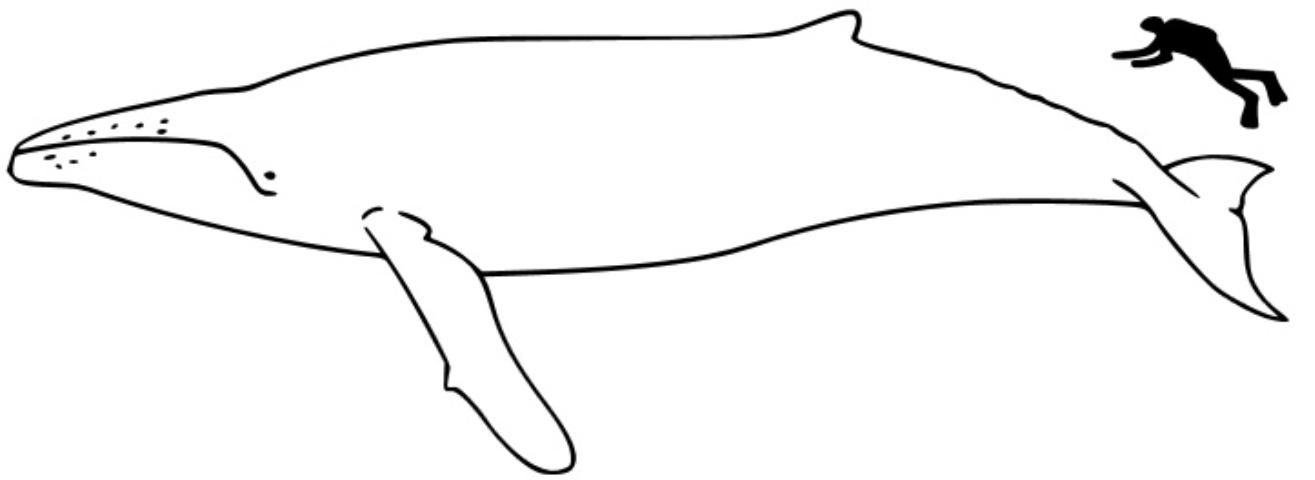
Killer whale (orca) (30 feet)
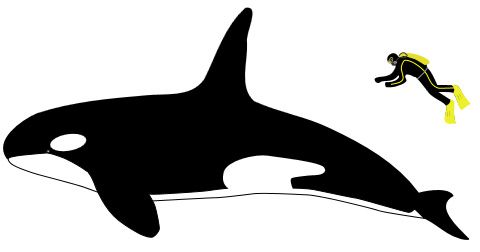
North Atlantic right whale (55 feet)
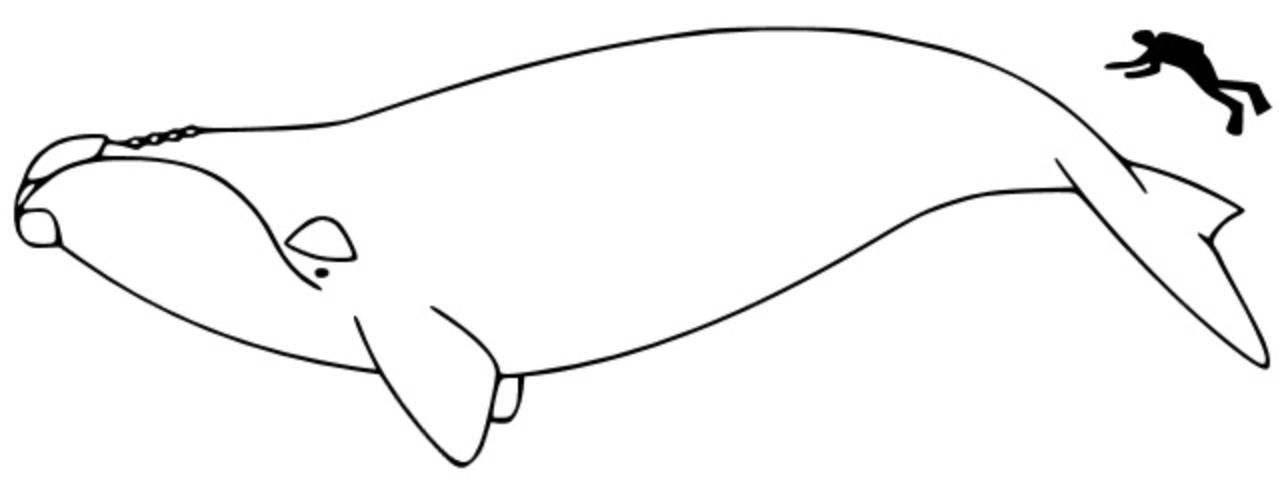
Bottlenose dolphin (9 feet)

Cuvier's beaked whale (23 feet)
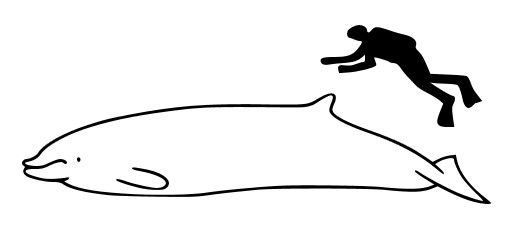
Fin whale (78 feet)

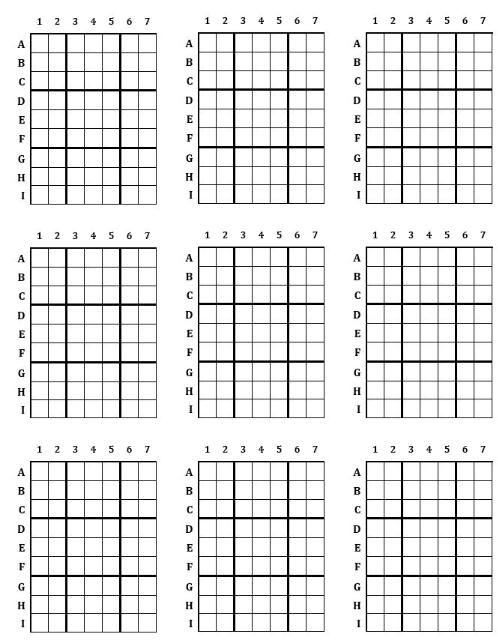
References
How Fast Does a Killer Whale Grow? worksheet is adapted from a SeaWorld activity called Graphing Growth.
SeaWorld. 2013. "Graphing Growth." Accessed on March 13, 2019. http://da15bdaf715461308003-0c725c907c2d637068751776aeee5fbf.r7.cf1.rackcdn.com/c2147a9c0deb4d83a2d64688749cd4b8_5-8-graphing-growth.pdf
Life-Size Whale is adapted from Aquatic Project Wild activity Whale of a Tail.